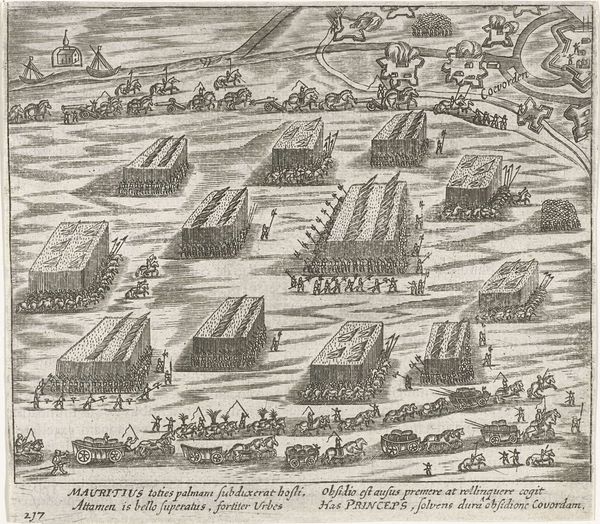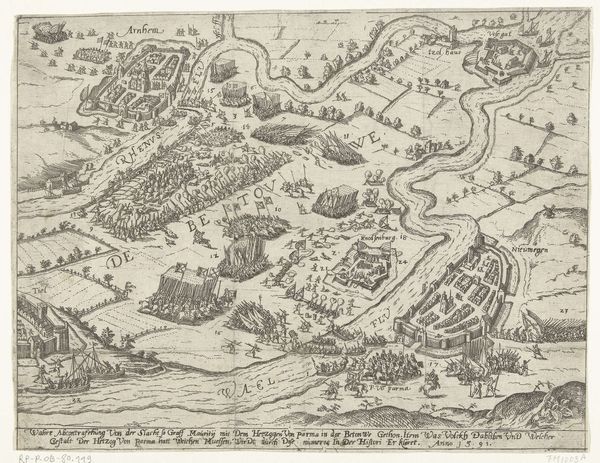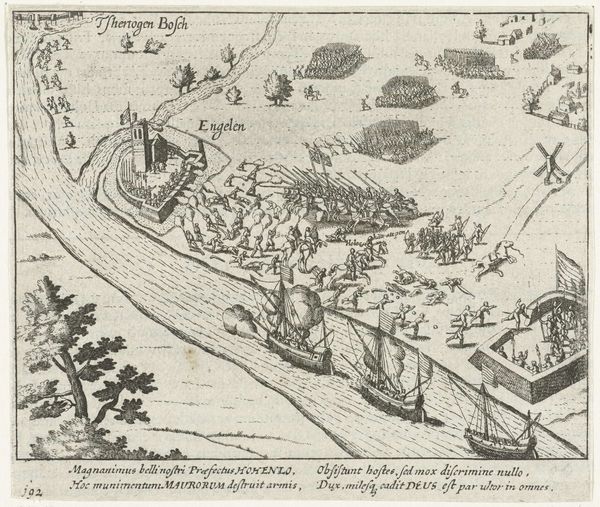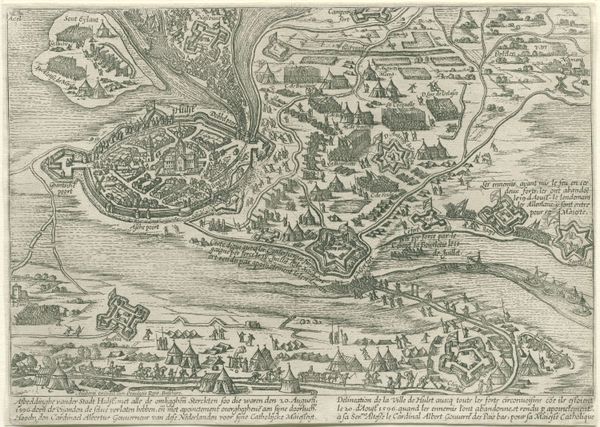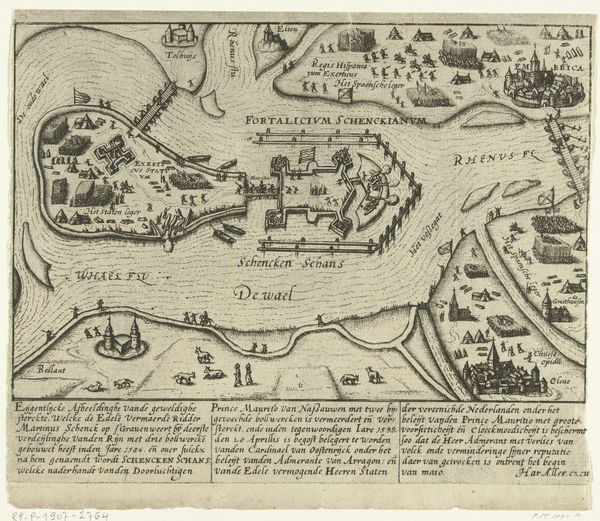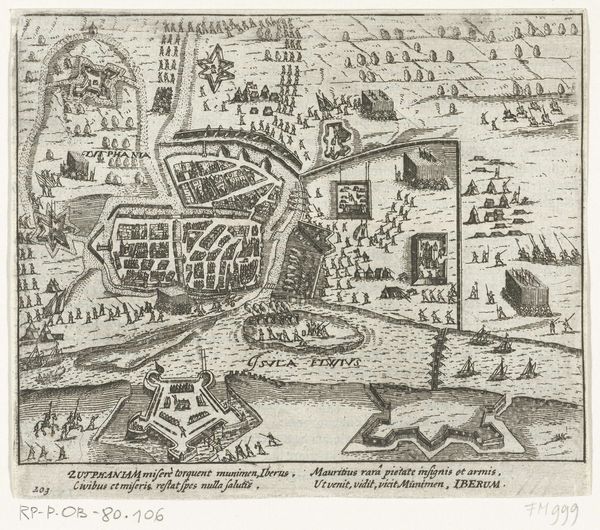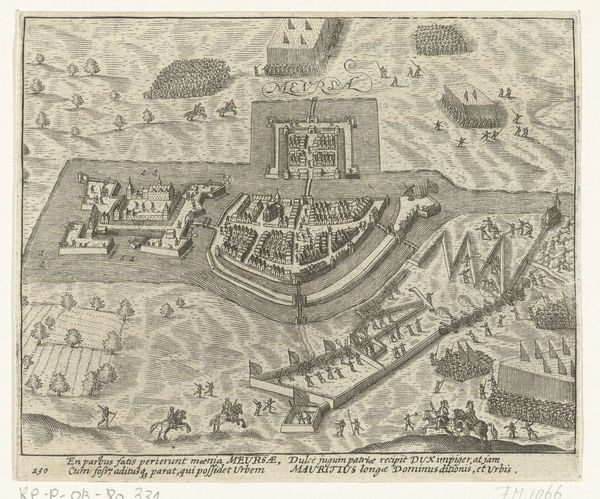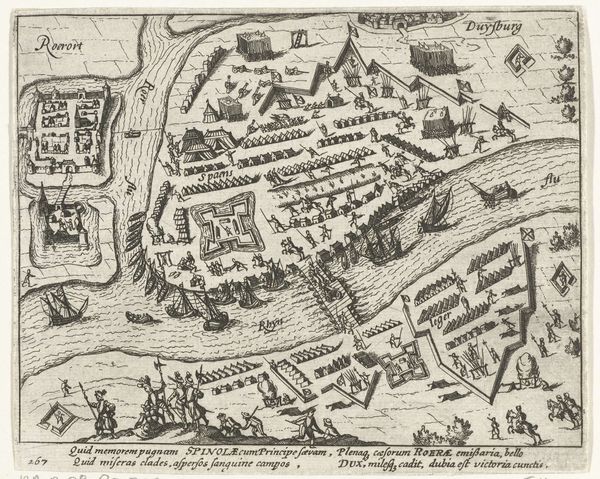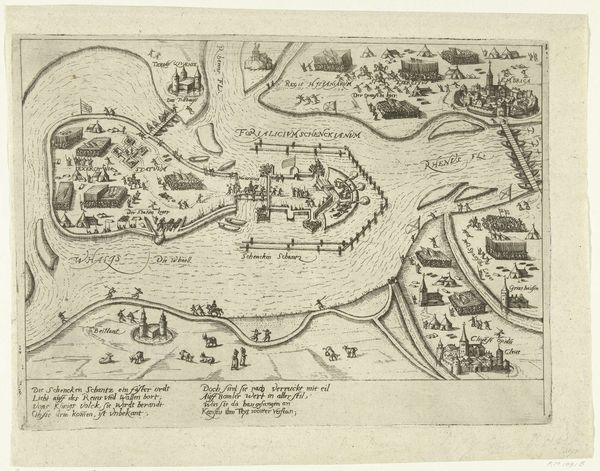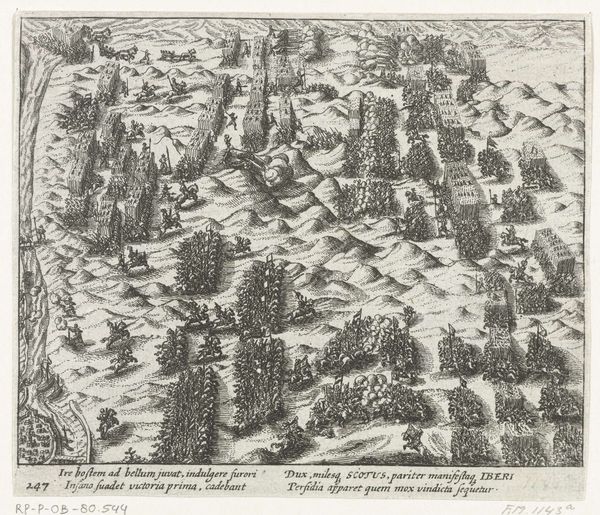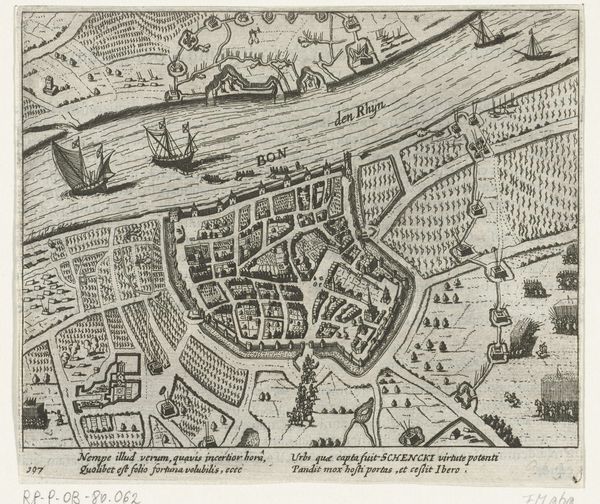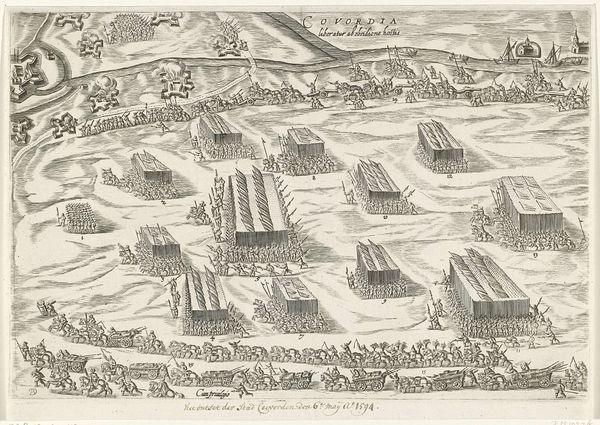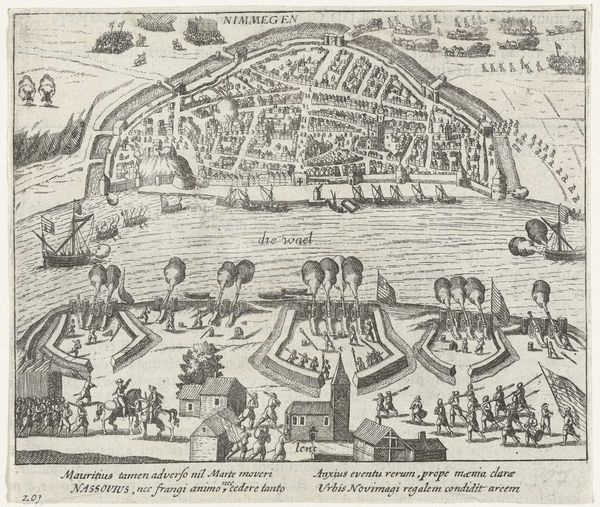
De hertog van Anjou tracht na het ontzet van Kamerijk de hertog van Parma tot een treffen uit te lokken, 1581 1610 - 1624
0:00
0:00
print, engraving
#
baroque
# print
#
history-painting
#
engraving
Dimensions: height 114 mm, width 166 mm
Copyright: Rijks Museum: Open Domain
Curator: We are standing before a print titled, "De hertog van Anjou tracht na het ontzet van Kamerijk de hertog van Parma tot een treffen uit te lokken, 1581." It dates to between 1610 and 1624 and is currently housed here at the Rijksmuseum. Editor: It's strikingly austere. I immediately see the methodical arrangement of forms— almost architectural— but executed with very fine, delicate lines. The scene reads as a landscape but simultaneously a map, like a field ready for a strategic game. Curator: Exactly. This print serves as both a visual record and a political statement related to the Duke of Anjou’s attempts to engage the Duke of Parma in battle near Cambrai in 1581. The composition speaks volumes about the power dynamics at play during that era of conflict, it’s all about strategy. Editor: So each block must represent units? Is that it? The labels designate formations? Curator: Precise. The imagery leans on established visual systems of power. Note the clear labelling and quantification of troops, creating a sense of order amidst the chaos of war. How might this ordering relate to contemporary concepts of leadership and control? Editor: The consistent, almost geometric representation, downplays individual humanity in favor of larger strategic narrative. There is something unsettling, dehumanizing perhaps, in rendering soldiers as quantified blocks on a board game of conquest. In the context of Dutch Baroque prints, how does this artwork further existing understandings about war or political struggle in art of the period? Curator: In Baroque art, representations of war are typically designed to inspire. But there’s an unusual quietness and calm about the image before us; not an action, but an arrangement. This is fascinating given that it depicts Anjou’s failure to instigate the battle. So this isn't only an aesthetic choice, but a political and social statement. This artwork is not about action but power and the potential of action. Editor: Looking closely, I also read subtle allusions to a bird's-eye view of real topographical formations that lends authenticity and imbues deeper meaning to the portrayed military strategies. The artwork provides key insight not only to battles and troop organization, but moreover the ways that power expresses and envisions itself. Curator: Precisely! This is much more than an account. The combination of practicality and artistry that "De hertog van Anjou tracht na het ontzet van Kamerijk de hertog van Parma tot een treffen uit te lokken, 1581," offers today continues to stir consideration, discussion, debate about how historical, political, and visual communication is achieved. Editor: And with the discussion, its symbolic potency remains resonant even centuries removed. I think the artist accomplished exactly this intention.
Comments
No comments
Be the first to comment and join the conversation on the ultimate creative platform.
